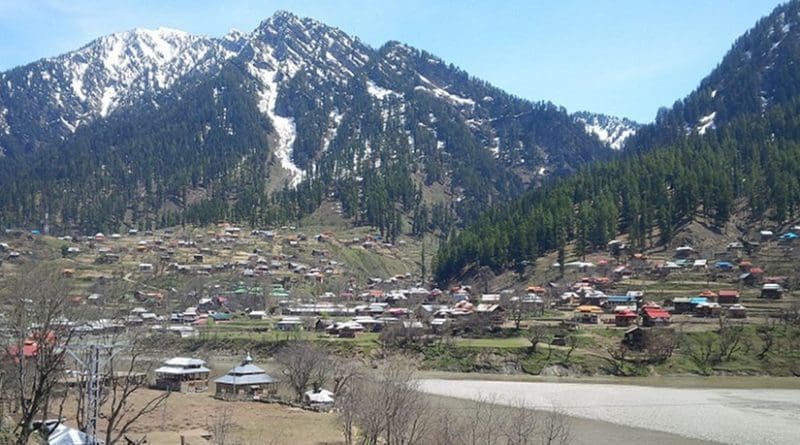Bring Locals To Peace Table In Kashmir – OpEd
By Gaurav Dixit*
The problem of Kashmir is a crisis which has been extensively debated within the policy circles, security agencies, on public forums and on TV channels, and yet the Valley and the state response have never failed to surprise the world.
Amid arguments, contestations, linear and overlapping perspectives over the recent ongoing cycle of violence in the Kashmir valley, which has witnessed similar kind of situations numerous times before, there is visible lack of clarity over the effective policy options. Instead we have set of conflicting ideologies and dogmas.
The Kashmir problem has slowly taken a form of being a mammoth monster for which India seems to have no solution. Since last three decades, there have been numerous attempts to reach a political solution to the Kashmir problem by engaging the locals as well as the neighbouring country Pakistan, but the success on both local and international level has been limited to an extent of inducing an intermittent peace.
And therefore, it becomes imperative to introspect, as Ajai Sahni, Executive Director, Institute for Conflict Management suggested in 2006 for more or less similar situation- it cannot be unreasonable to inquire whether there are at least some avoidable deficiencies in a ‘peace process’ that so escalates violence, destabilizes established equations, provokes a dramatic hardening of positions, pushes areas of relative peace into sudden carnage, raises political tempers and polarizes political constituencies.
To understand the avoidable deficiencies in peace process we need to understand why process to negotiate peace agreements fall apart- is it either due to lack of confidence or as a result of violence, and can peace process be ever accompanied by series of violence.
One of the principal conditions for peace process, as argued by Johan Galtung, a sociologist is the commonality of the purpose, a common basis that may pave the ground for future ties. A singular definition of peace for the conflicting parties to project the harmony of interests should be the base for negotiation.
Assuming that the kind of peace proposed by the Kashmiris is more or less similar to the kind of peace desired by the state in the valley, the conflicting parties needs to sit and decide the principal condition that should be the basis of dialogue.
The biggest hurdle to the peace process in Kashmir is the confusion over the role and involvement of Pakistan. India, under all regimes, has been unclear about the kind of engagement it wants to have with Pakistan over the Kashmir issue. This dilemma has often reverberated in its approach during foreign secretary dialogues.
Composite Dialogue process between the two countries, inaugurated by Foreign Secretary level talks at Delhi in 2006 was unsuccessful. Since then we have witnessed similar quandary in almost every talk including the cancellation of foreign secretary level dialogue last year, and this has been a similar process since the inception of dialogues.
The major reason behind India’s dilemma is lack of commitment from Pakistan. The future of the dialogue process amidst such confusion and under sustained phase of violence can only be nonproductive, at best temporary.
Whenever Kashmir witnesses series of violence putting Indian government at pressure, we witness a contemporaneous debate over the issue of Kashmir’s territorial position vis-a-vis India.
Recently, the US State Department spokesman echoed India’s stand that Kashmir is an internal matter of India. It further asked all stakeholders to make efforts towards finding a peaceful resolution of tensions in the Valley.
It could be considered as India’s diplomatic victory over Pakistan. Yet India needs to mobilise more international support for its claim on the region, whereby it can begin talks and negotiation purely at the Kashmir level.
The insurgency has nearly died down and violence has been at its lowest levels since 1990. Barring the recent civilian casualty during the recent protest, the civilian casualty is constantly dipping down.
Another aspect of the need to localize talks is the declining number of terrorist infiltrating from the other side of the border. Militants operating in Kashmir today are largely Kashmiris, with declining number of foreign militants. This is an apt moment to engage Kashmiris, ignoring Pakistan, to chalk out plans for the future.
Having said that, bringing locals on the table is a complicated issue, more when the PDP-BJP alliance government has been unable to handle one after another protest turning into violent clash. Government need to send a strong yet sedate message to the Kashmiris.
Failing to do that, we may see spiraling of violence in the valley. The huge number of protesters in Kashmir in support of Burhan Wani, and subsequent killing of the stone pelters, is a slight reminder of May 1990, when unknown gunmen assassinated Kashmiri cleric, Mirwaiz Maulvi Farooq, in Srinagar. Later firing by security forces on the lakhs of funeral attendees killing 20 people evoked anger among the locals. It led to the violent eruption of militancy with considerable local support.
India today is marginally at the risk of losing the advantage and it must act before it gets too late.
*Gaurav Dixit is an independent analyst working on strategic issues related to India. He can be contacted at: [email protected]

